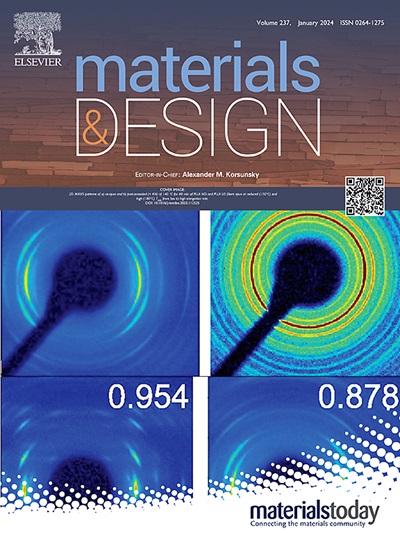Phase transformation and recrystallization of cold-rolled AISI 304L austenitic stainless steel during annealing
IF 7.6
2区 材料科学
Q1 MATERIALS SCIENCE, MULTIDISCIPLINARY
引用次数: 0
Abstract
Refining the heat-affected zone (HAZ) microstructure of thermomechanically welded cold-worked AISI 304L austenitic stainless steels (ASSs) improves the weld quality. This study explored the annealing behavior of cold-rolled AISI 304L ASSs through heat treatments over temperatures ranging from 600 °C to 1200 °C and holding times ranging from 2 min to 480 min. The microstructure was analyzed using optical microscopy and EBSD, and the deformation-induced martensite (DIM) content was evaluated using the ferrite scope. Vickers hardness values were correlated with the microstructure evolution following the Hall-Patch relationship. The grain size distribution and the kinetics of grain coarsening were analyzed. Results show that during annealing, the reverse transformation of DIM occurred, followed by static recrystallization of the γ-austenite phase. After recrystallization, grains coarsen with an activation energy of 133.8 kJ/mol, and grain size distribution fits a log-normal function. Nanoscale grains (< 180 nm) were achieved in cold-rolled samples (67 % thickness reduction) annealed at 700 °C for 4 h. The δ-ferrite, primarily located at γ-grain boundaries, retarding their movement during recrystallization and coarsening. Finally, the δ-ferrite partially transformed into austenite and globularized during annealing. These findings show that the processes of phase transformation and recrystallization in cold-worked dual-phase steels are coupled.

求助全文
约1分钟内获得全文
求助全文
来源期刊

Materials & Design
Engineering-Mechanical Engineering
CiteScore
14.30
自引率
7.10%
发文量
1028
审稿时长
85 days
期刊介绍:
Materials and Design is a multi-disciplinary journal that publishes original research reports, review articles, and express communications. The journal focuses on studying the structure and properties of inorganic and organic materials, advancements in synthesis, processing, characterization, and testing, the design of materials and engineering systems, and their applications in technology. It aims to bring together various aspects of materials science, engineering, physics, and chemistry.
The journal explores themes ranging from materials to design and aims to reveal the connections between natural and artificial materials, as well as experiment and modeling. Manuscripts submitted to Materials and Design should contain elements of discovery and surprise, as they often contribute new insights into the architecture and function of matter.
 求助内容:
求助内容: 应助结果提醒方式:
应助结果提醒方式:


